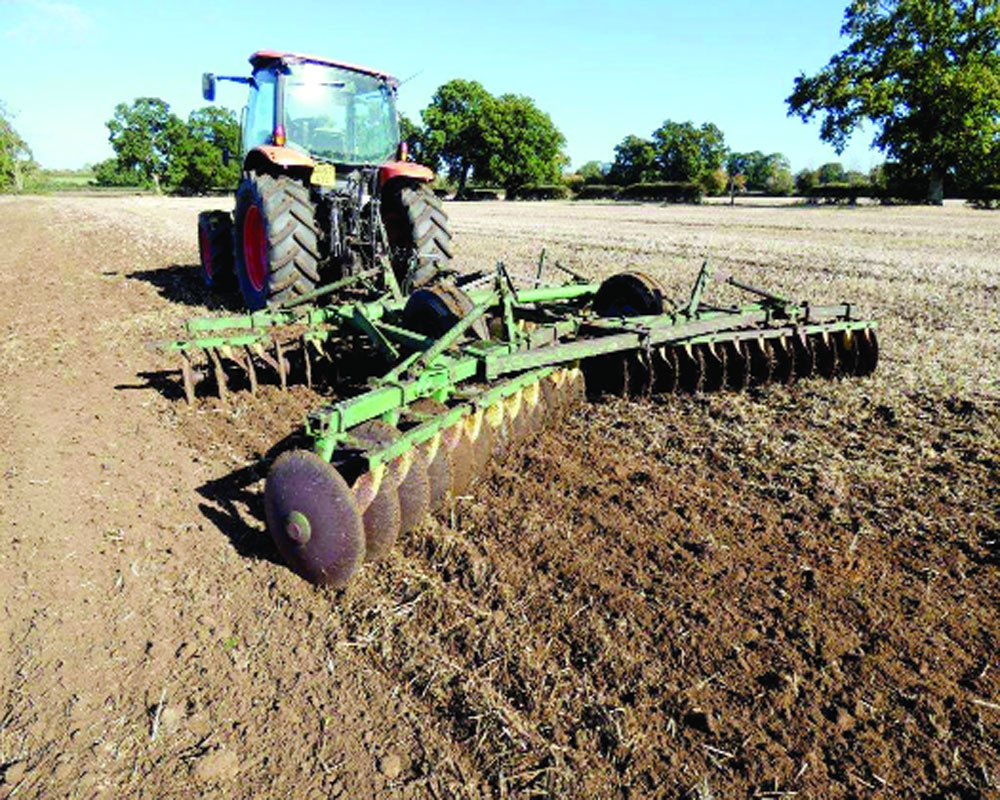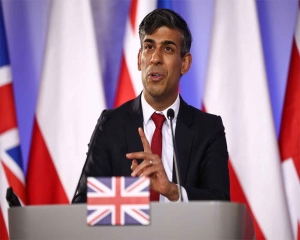Shortage of workers is pushing the demand for farm equipment. India can dominate the world market by leveraging its machine tools
Efficient and timely farming operations rely on a collaborative effort between man, machine, and materials. The integration of farm mechanization is crucial for achieving optimal output levels, efficient use of resources, and meeting the increasing demand for agricultural products. Transitioning from traditional to smart farming creates growth opportunities and attracts young talent to innovative agriculture, resulting in improved income and greater comfort.
Moreover, the global agricultural sector is experiencing a shortage of workers due to the migration of labourers to cities. In India, the percentage of farm workers has declined from 59% in 1991 to 54% in 2011 and 39% in 2022. To address this issue, the use of farming machinery has increased worldwide for more precise and timely field activities. India has emerged as a leading manufacturer hub and exporter of tractors, with a growing number of partnerships with Japanese and German manufacturers, and more are expected to follow suit.
The Asia Pacific region dominated the global market with a volume share of 69% in 2022. This growth was mainly driven by India’s tractor industry, followed by China and the rest of Asia Pacific. India led the regional market with over 54% share in 2022 and is known for its excellence in farm machinery exports, with tractors contributing to more than 80% of the total value. The global agricultural tractor market totalled 29.42 lakh units in 2022 and is expected to grow at a compound annual rate of 7% from 2023 to 2030, attributed to the increased demand for farm tractors, particularly from Italy, Greece, and Lithuania. Furthermore, the market is expected to be driven by the high demand for autonomous tractors over the forecast period.
The demand for compact tractors on small farms and technical advancements, such as the integration of telematics with agricultural tractors, are expected to further drive growth. India's production share accounts for 33% of the global market of around 3 million tractors annually, with over one million units produced each year. Out of one million units, approximately 9 lakh units were sold in the domestic market, while 1.31 lakh units (4.5% of the global share) were exported in 2022. To strengthen the "Made in India" initiative, Sonalika ITL currently holds the majority share of the export market at 40% and is organizing a global partners summit, called ‘GPS 200’, from October 12th to 14th in Delhi.
India has great potential for exporting tractors to countries such as the US, Brazil, Italy, Greece, Lithuania, Argentina, Turkey, SAARC countries, and African nations, with an expected export of over 200,000 tractors by 2025.
Aside from tractors, there has been a significant increase in non-tractor agricultural machinery, such as power tillers, combine harvesters, diesel engines, and electric motors, which have improved crop productivity. Sales of these items have increased by 0.50 million, 0.05 million, 11.50 million, and 7.50 million, respectively. Despite this growth, 53% of non-tractor agricultural machinery is still imported from China, making it essential for policymakers to take strategic actions to foster the growth of non-tractor farm machinery in India and turn it into a global production and export hub.
Since 2010, precision agriculture and post-harvest processing technologies revolutionized agricultural mechanization. However, India's farm mechanization level remains low at 45%, compared to the United States at 95%, Brazil at 75%, and China at 57%. Wheat has the highest mechanization level in India at 69%, followed by rice at 50%, maize at 45%, pulses at 41%, oilseeds at 38%, cotton at 35%, and millets and sugarcane at 33%. Small land holdings and financial constraints are major obstacles to efficient mechanization in agriculture. To overcome these challenges, farmers, manufacturers, government, and non-governmental organizations recognize the need for smart farming technologies such as sensor-based embedded systems to monitor soil nutrients, temperature, fertility, and moisture gradients, as well as guidance systems enabled by GPS and automated tractors.
Challenges: Punjab produces one-third of India's tractors and a significant number of non-tractor farm machinery. Unfortunately, the state manufacturers incur over twice the logistical costs for exports compared to Southern and Western coastal states. As a result, a special freight policy for railways has been eagerly anticipated for a long time to boost Punjab's farm machinery exports.
Electricity duty, taxes and duties on petroleum products etc. are not yet refunded through the GST mechanism for the exporters. The government should offset the cost disadvantage arising out of these duties and levies.
OEMs are facing short-term challenges such as high raw material prices and semiconductor component shortages. These challenges are compounded by disruptions in the supply chain, which lead to delays in production. Additionally, the increasing popularity of autonomous tractors has prompted OEMs to adopt an inorganic growth approach to increase market presence.
No Incentives by Punjab Government: The Punjab government's goal of making the state's industrial sector an export hub is hindered by its lack of incentives for industries with "Inverted Duty Tax Structures." The Industrial and Business Development Policy-2022 fails to provide support to these industries. The policy contains the same mistake as the previous one, stating that any refund from the central government will be adjusted against the payment of state incentives. This means that if an industry pays 18% GST on input raw materials and 12% GST on the final product, it falls under Inverted Duty Tax Structures and is entitled to claim input tax credit from the central government. However, it is deprived of even a minimal incentive of 2.5% on Fixed Capital Investment (FCI) by the Punjab government. This policy dilutes the purpose of attracting new investment to the state and needs to be revisited. Clause no.12.26 of the new industrial policy needs correction.
Central Incentives to be Restored: The Central annual export incentive- the Merchandise Exports from India Scheme (MEIS), which amounted to Rs 51,012 crore, has been replaced by the Remission of Duties and Taxes on Exported Products (RoDTEP) scheme. The new scheme offers a lower incentive of Rs 12,454 crore. As a result, the previous 3% export incentive on agricultural implements such as tractors has been reduced to 0.7%, and still, the disbursement of production-linked incentive (PLI) is also awaited.
Road Ahead: India has a competitive advantage in tractor-mounted machinery, which is in high demand among large farmers in both domestic and developed markets. Self-propelled and hand-driven mechanised farm machinery has a local market among small and marginal farmers, as well as in developing nations with similar socioeconomic patterns, such as Asia and Africa. India can leverage this dual structure to benefit small and marginal farmers globally, while also becoming a leading provider of non-tractor farm machinery.
(AS Mittal is vice-chairman of Sonalika Group, Vice-Chairman of the Punjab Economic Policy and Planning Board, and Sushant Mittal is ED Sonalika Group and a global business strategist. Views expressed are personal)


























